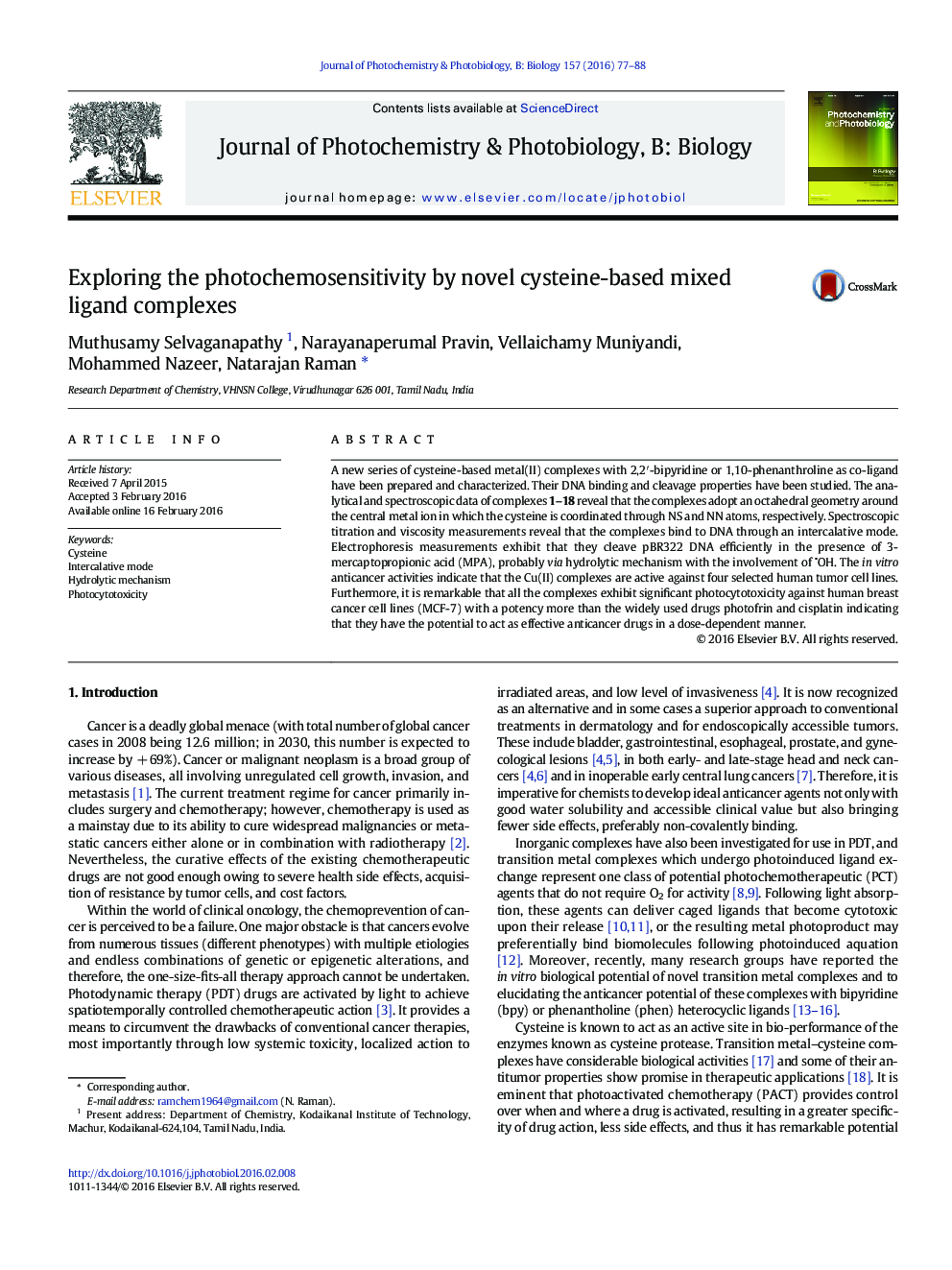| Article ID | Journal | Published Year | Pages | File Type |
|---|---|---|---|---|
| 29372 | Journal of Photochemistry and Photobiology B: Biology | 2016 | 12 Pages |
•Synthesis of novel metalloinsertors having cysteine analogues.•Act as good metallointercalators.•Excellent microbial ability as well as efficient DNA cleavage ability•Enhanced photocytotoxicity against four human cancer cell lines.
A new series of cysteine-based metal(II) complexes with 2,2′-bipyridine or 1,10-phenanthroline as co-ligand have been prepared and characterized. Their DNA binding and cleavage properties have been studied. The analytical and spectroscopic data of complexes 1–18 reveal that the complexes adopt an octahedral geometry around the central metal ion in which the cysteine is coordinated through NS and NN atoms, respectively. Spectroscopic titration and viscosity measurements reveal that the complexes bind to DNA through an intercalative mode. Electrophoresis measurements exhibit that they cleave pBR322 DNA efficiently in the presence of 3-mercaptopropionic acid (MPA), probably via hydrolytic mechanism with the involvement of •OH. The in vitro anticancer activities indicate that the Cu(II) complexes are active against four selected human tumor cell lines. Furthermore, it is remarkable that all the complexes exhibit significant photocytotoxicity against human breast cancer cell lines (MCF-7) with a potency more than the widely used drugs photofrin and cisplatin indicating that they have the potential to act as effective anticancer drugs in a dose-dependent manner.
Graphical abstractThe newly synthesized cysteine amino acid mixed-ligand complexes exhibit more efficient DNA intercalators and photocytotoxic effects than cisplatin and photofrin. Microbial assay reveals that they are metal-based chemotherapeutic agents.Figure optionsDownload full-size imageDownload as PowerPoint slide
